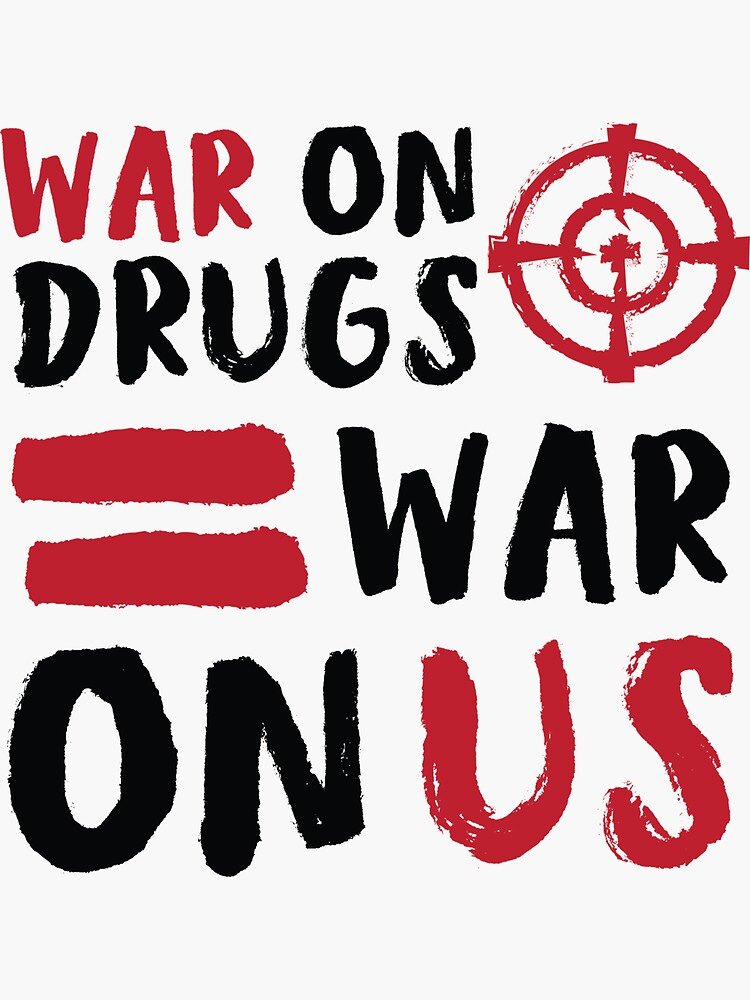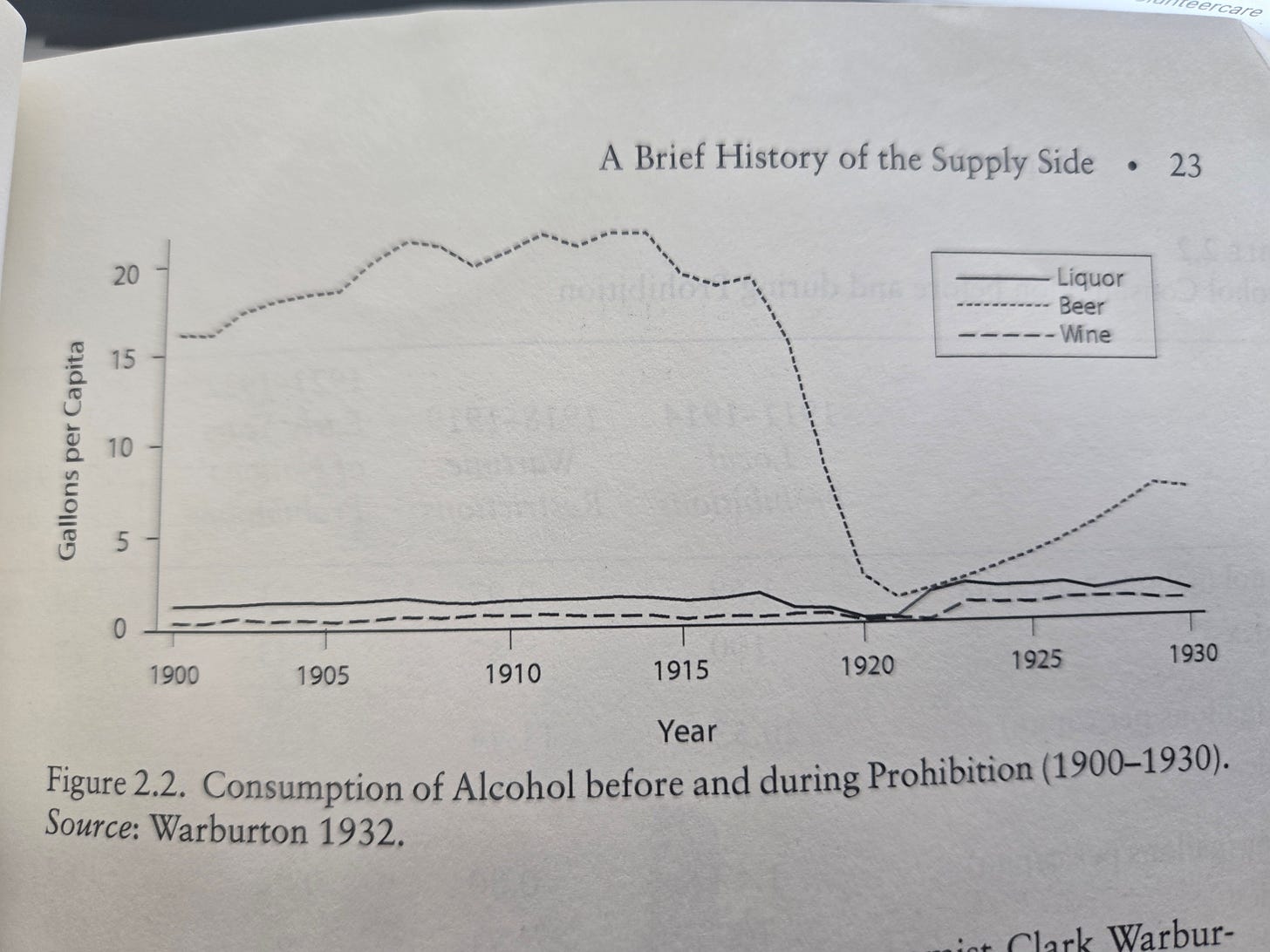They Lied. Prohibition Actually Worked Quite Well.
How an Approach to Substance Abuse Has Been Smeared
If your schooling went anything like mine, the most important thing you learned about Prohibition is that it didn’t work. My teachers taught that instead of decreasing alcohol use, the 18th Amendment increased it by causing people to rebel and drink bathtub gin with wild, Jazz-fueled abandon. And as if increasing drinking levels weren’t reason enough to repudiate prohibition, our teachers pointed out that Prohibition caused the bloody rise to power of the Italian Mob. In this version of events, the gangland violence and promiscuous flapper girls are what you get for trying to place restrictions on humans’ desire to get sauced.
Prohibition, we were taught, was a failed experiment—end of story. Far beyond being merely a cautionary tale about the dangers of legislating morality, the word “Prohibition” became a magical argument-ender and has been used to defeat attempts to restrict tobacco, firearms, cannabis, prostitution, gambling, immigration, and internet pornography.
But perhaps its most popular use has been to condemn the War on Drugs.
The War On Drugs
According to the popular narrative, Prohibition was the spiritual forebearer to the War on Drugs—both were moral panics, led by Christians and other fussbudgets who decried its effect on families and its close association with lawlessness and crime. And both movements impinged on civil liberties. Both Prohibition and the War on Drugs empowered men in dark suits to repress nonconformists through surveillance and enforcement. Smart and kind people had nuanced attitudes toward substances. They winked at substance use for the majority of people and favored treatment over enforcement strategies for those few unfortunates who were vulnerable to addiction.
But what if what we were taught about the 18th Amendment wasn’t true? In this post, I aim to demonstrate that prohibition was quite effective in reducing drinking and the problems that drinking causes.
It worked, darn it. It worked.
Photo: Cook, P. J. (2007). Paying the tab: The costs and benefits of alcohol control. Princeton University Press.
As you can see from the graph above, there was a steep drop-off in beer consumption along with a more minor dip in wine and liquor. Here are a few facts from Cook’s book and a study by Miren and Zwiebel [1991]:
Deaths from Cirrhosis dropped during Prohibition from 13.9 deaths per 1000 to 8 per 1000. [Cook]
Alcoholic Psychosis dropped significantly
Drunkenness arrests dropped significantly as well.
Alcohol consumption decreased significantly among lower to middle-income Americans, mostly by making it expensive.
For the wealthy, the massive increase in consumption one would expect in the Jazz-and-Flapper-Girl age did not materialize. Despite huge increases in income and the relaxing of social mores, the rich continued to drink at pre-Prohibition levels.
I could not find statistics for other alcohol-related problems. But many studies suggest that alcohol is the dominant factor in accidental deaths, domestic violence, murder, and suicide. Thus, it is highly likely that these outcomes also improved when alcohol consumption dropped.
Evidence from therapy programs for youth
Multi-Systemic Therapy (MST) is an evidence-based treatment for problematic substance use in youths ages 12-18. Interestingly, MST does almost nothing to help their young clients manage their drug use. They don’t provide education on the harmful effects of substances. They don’t discuss how to manage cravings. In fact, they rarely discuss goals and strategies with the clients at all.
Instead, they work with the parents, schools, and probation officers of their clients to institute a personalized type of Prohibition on substances. Room searches and drug tests are done, and consequences are given for evidence of substances in either. Parents are encouraged to work together to keep delinquent teens apart from each other. This may mean that groups of parents have a “refuse entry” policy for their child’s delinquent peers. Or it might mean that teens are signed up for supervised activities, such as school sports or after-school jobs, with bosses who are on board with constant surveillance of the teen. Teens’ money and free time are often restricted or closely monitored to prevent substance use.
Boiled down to its essence, MST enforces a type of Prohibition on teens by stepping up monitoring, supervision, and consequences. You might say they focus on surveillance and interdiction.
And it works.
Multiple outcome studies confirm that the program is one of the most effective for substance abuse among teens. A member of MST’s research group once told me in a private conversation that the National Institutes of Health will not fund further effectiveness studies because the evidence is already so overwhelming. In the minds of the government funders, some things are accepted as scientific facts. The Earth is round. Parallel lines never touch. And MST is an effective treatment for teen substance abuse. Why fund more research into such things?
Interesting reading? Share this publication with a friend
The moral of the story
The depiction of Prohibition I learned in school was slanted and inaccurate. Yes, there were problems. Organized crime flourished, and the supply of alcohol became more dangerous as unscrupulous bootleggers sold denatured alcohol and other types of poisonous liquids as refreshments.
But the conclusion that has been drawn is patently false.
Restricting access to substances is NOT a failed strategy. Governments and families should not give up blocking access to substances or imposing consequences for substance use. In the case of parents with a substance-using child, the choice is clear: Get between your child and drugs any way you can.
For the family of an adult with a substance use issue, the lines are more blurry. An adult should ultimately be responsible for their own sobriety. Still, family members should feel empowered to set boundaries and declare some events and locations as dry zones. It is unlikely you will encourage more substance use with such actions. But your firmness can give the addict more reasons to get sober.
The bottom line: People have used Prohibition as a bogeyman and a justification for not enforcing laws against drug use. But governments and families can and should implement reasonable drug and alcohol policies.






